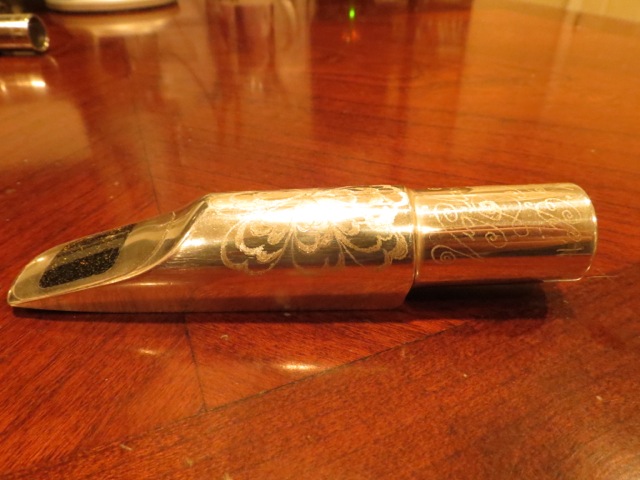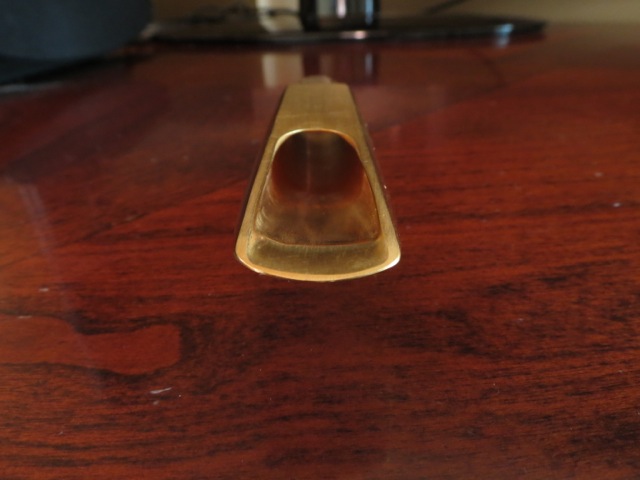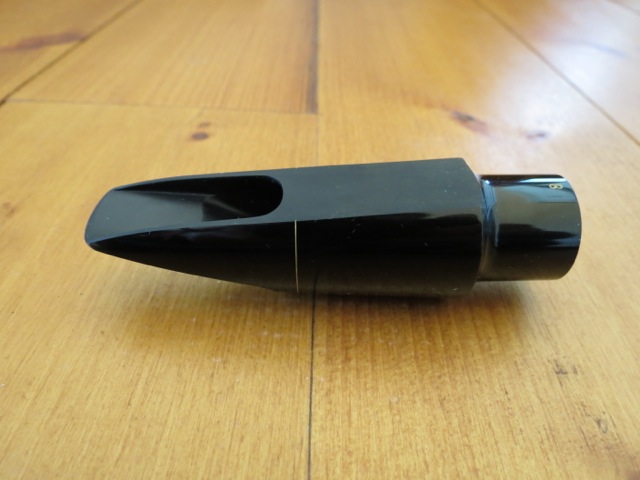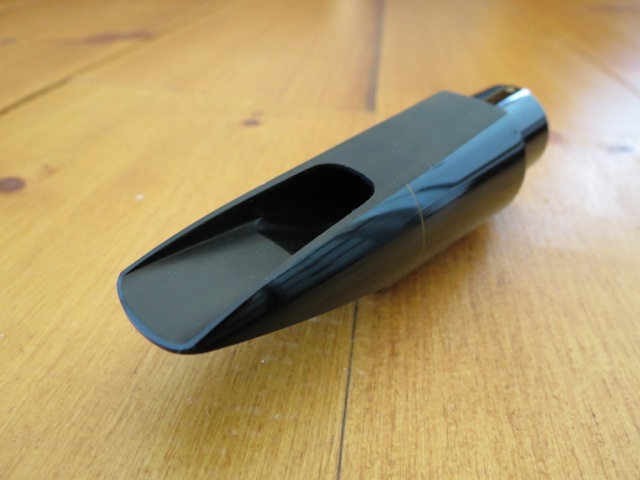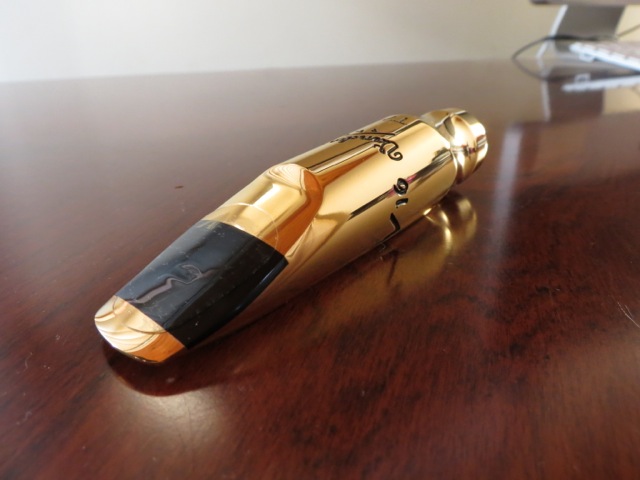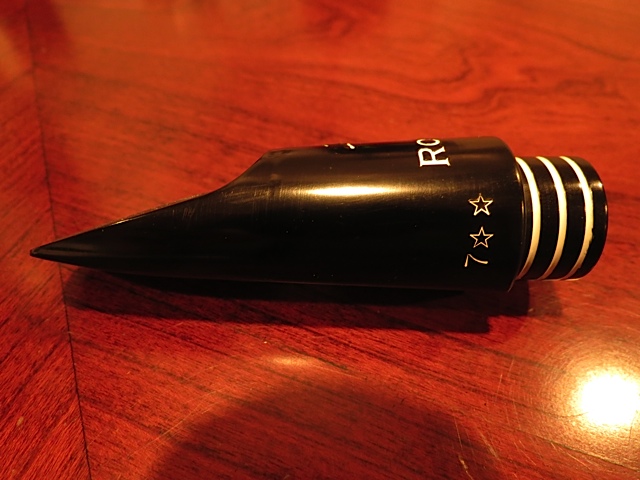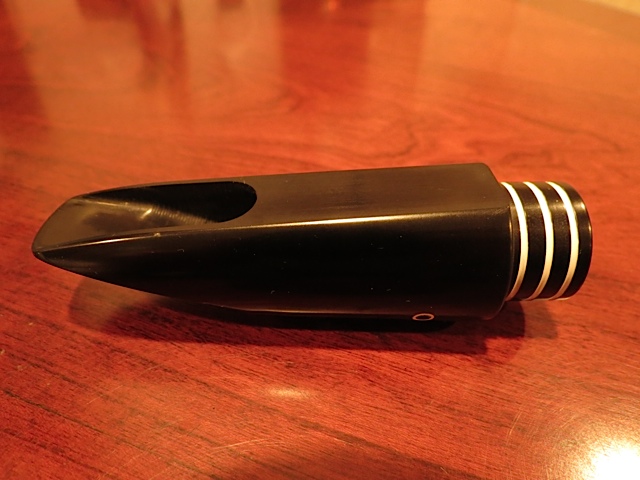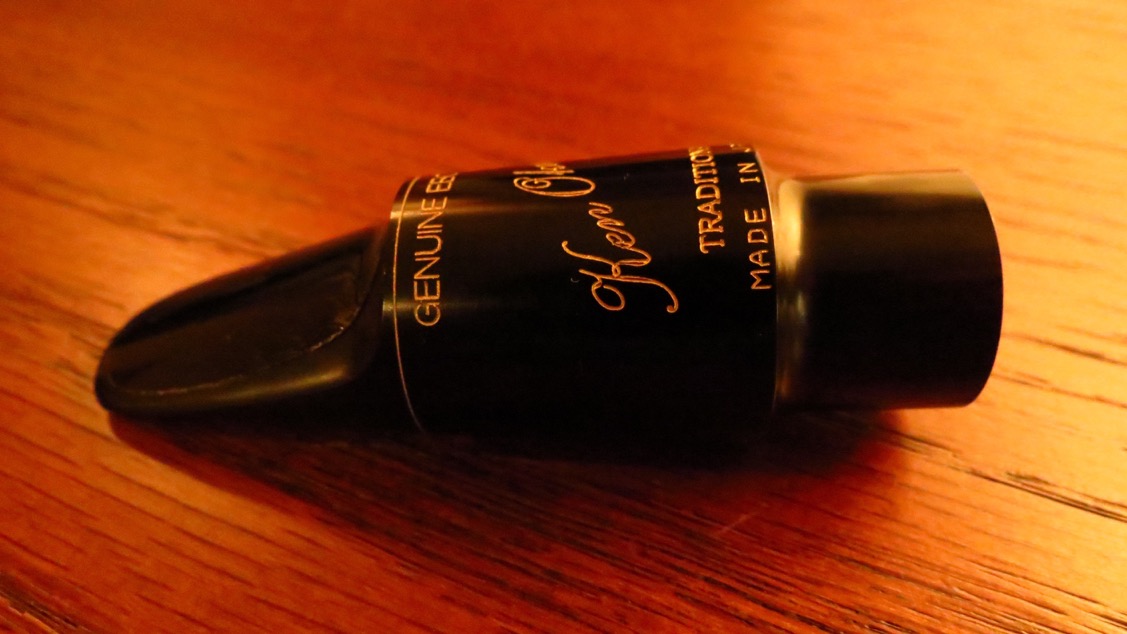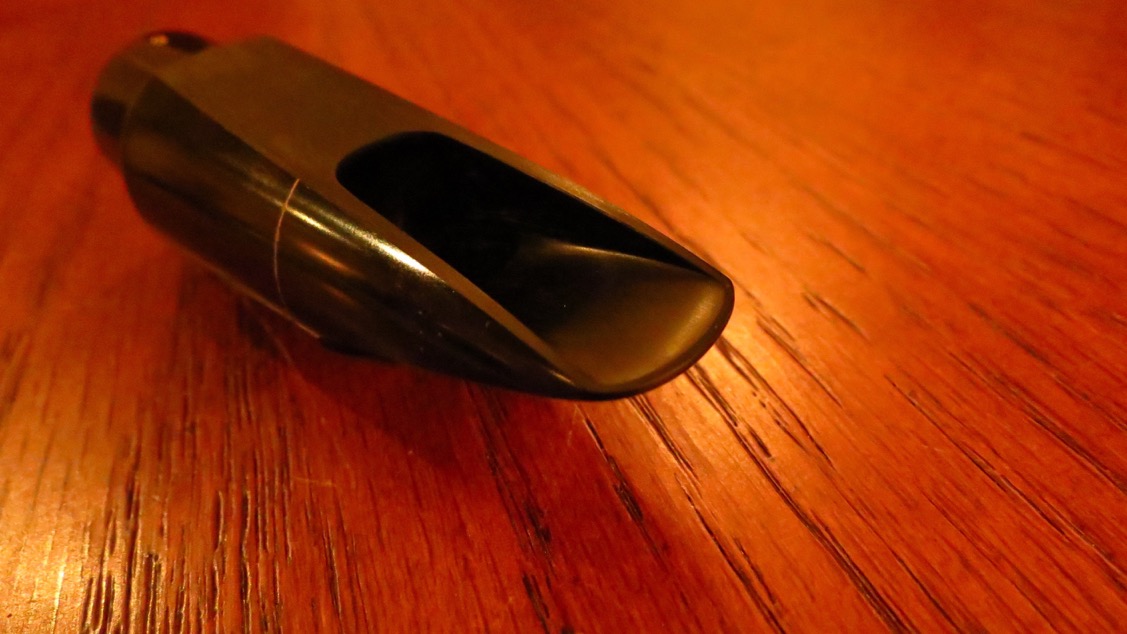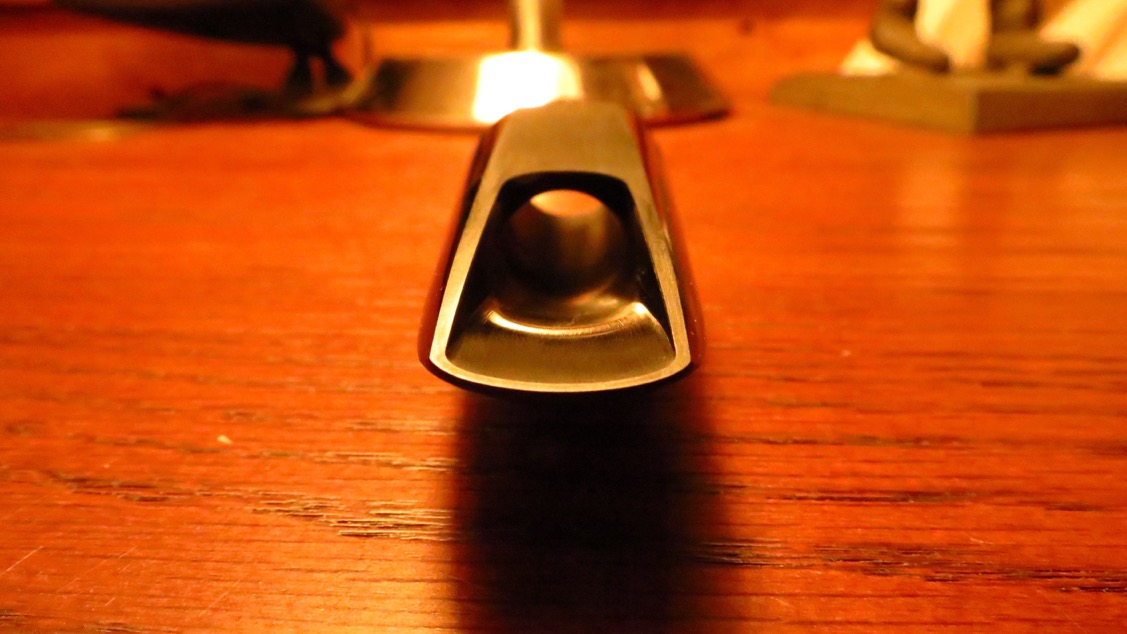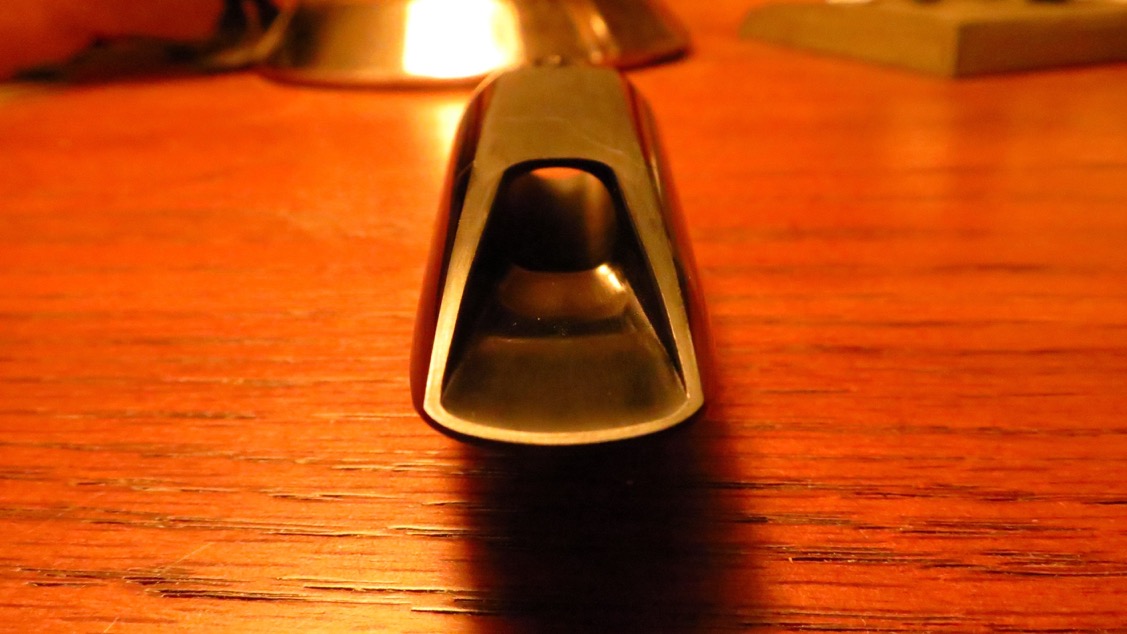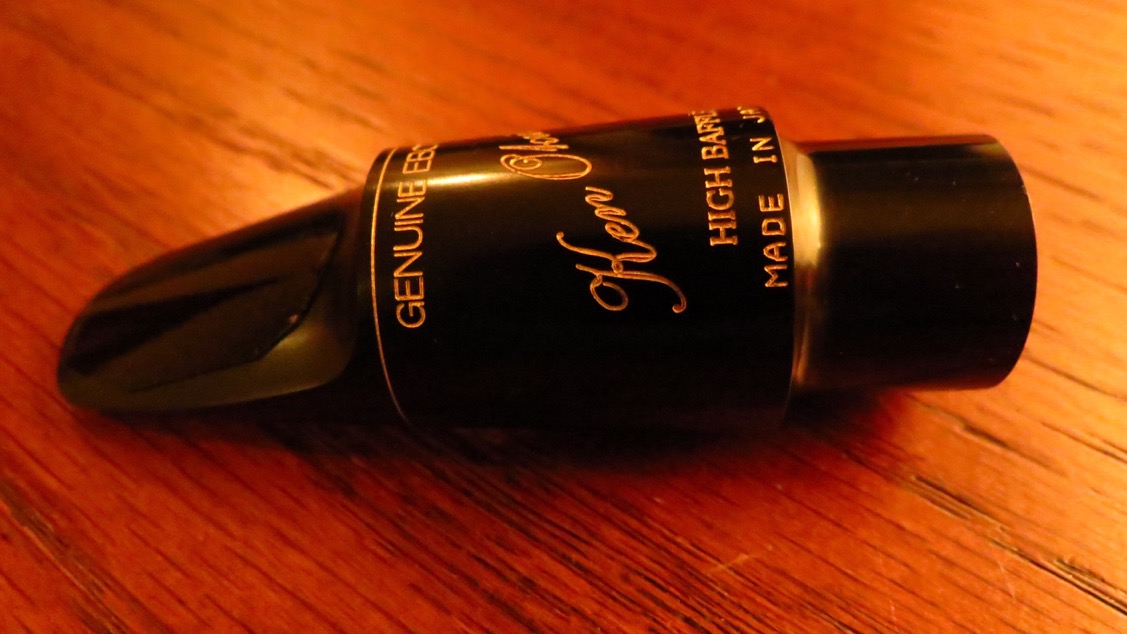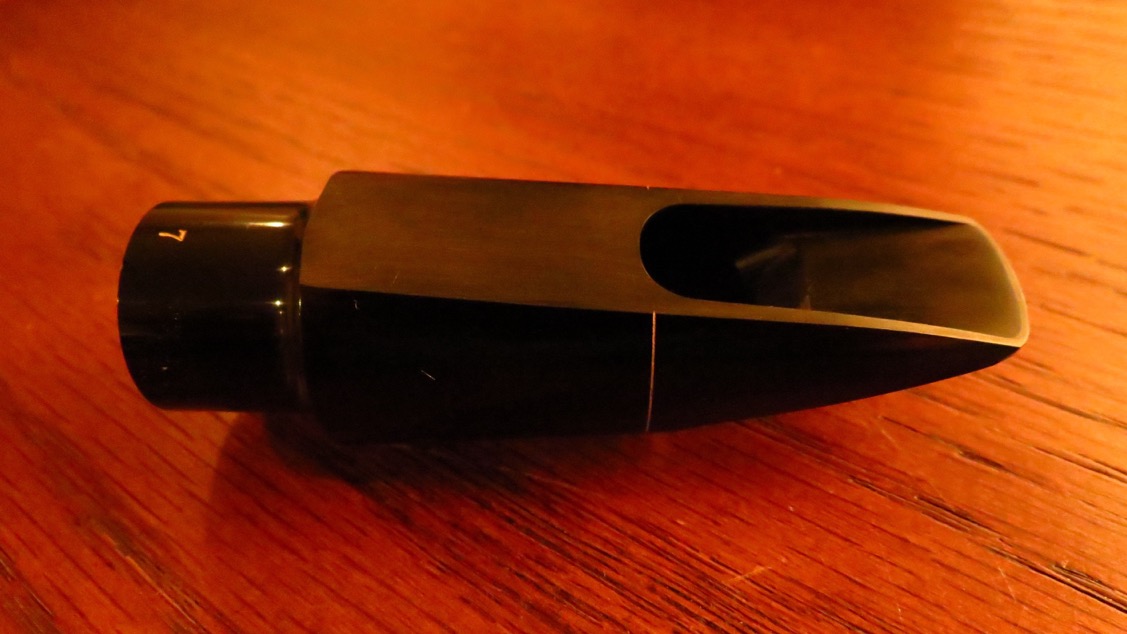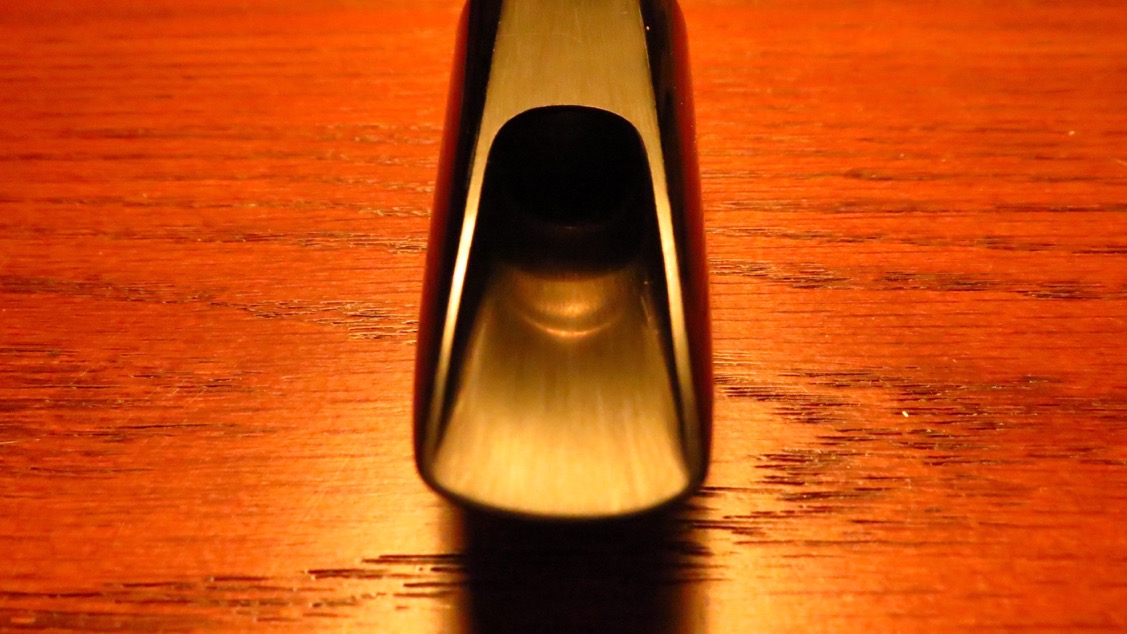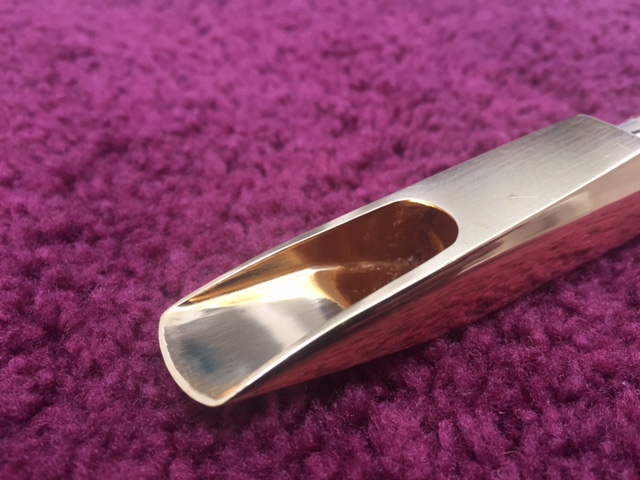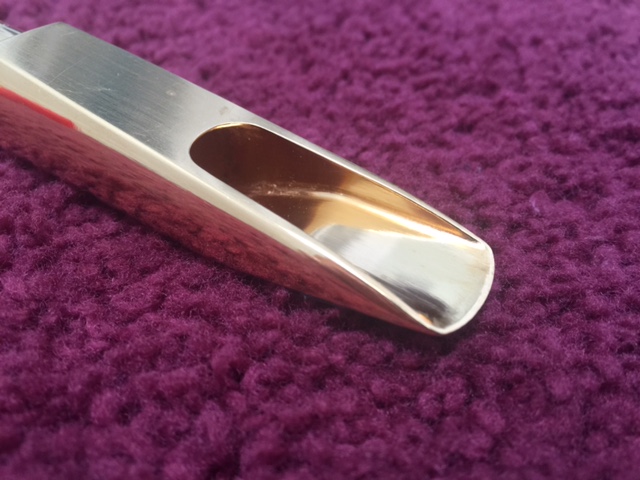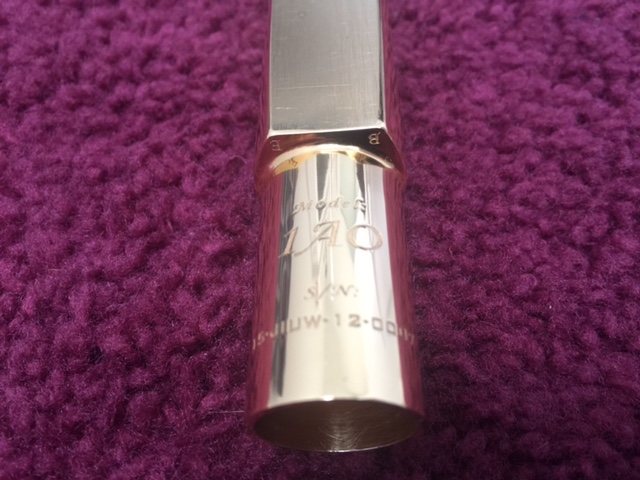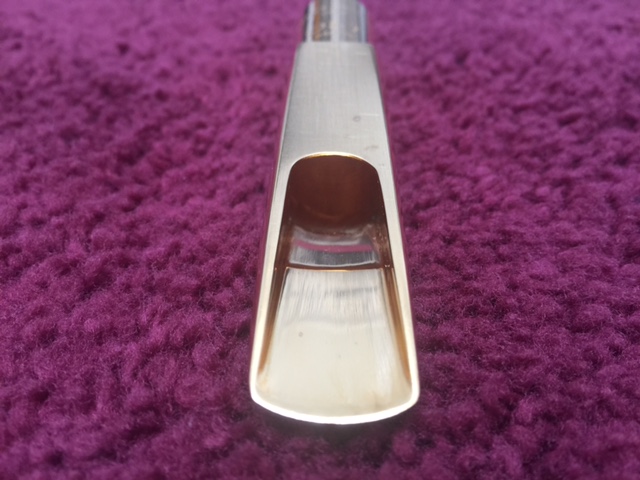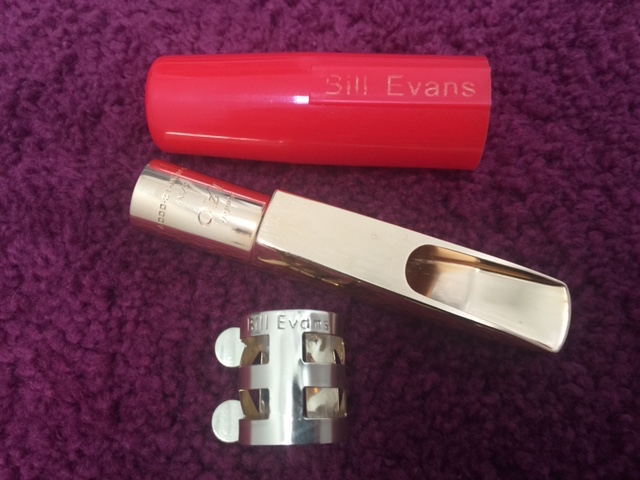Today, I am reviewing a mouthpiece made by Jennifer Price at Vigilante Mouthpieces. There are 10 models to choose from on the Vigilante website. Today, I am reviewing the Detroit Rock which is the brightest mouthpiece that they make. (I also just did a review of the NYII to which is their 4th brightest mouthpiece)
Vigilante Detroit Rock Tenor Saxophone Mouthpiece
The two mouthpieces I have today are considered “high baffled” saxophone mouthpieces. This means that the area after the tip of the mouthpiece is raised and forms what looks like a ledge inside of the mouthpiece. This baffle has the effect of making the tone brighter and louder. My first two tenor sax mouthpieces were high baffle mouthpieces. A Brilhart Level-Aire and a Sugal JB mouthpiece. I played those mouthpiece for about 8 years while gigging in different bands around Boston in the 80’s and 90’s. Matter of fact, I don’t think I even tried a tenor mouthpiece without a high baffle for the first 20 years of playing the tenor……….I didn’t even know what a baffle was…………
This Detroit Rock mouthpiece looks to be in good condition but is used so it has some wear on the table as well as many scratches. The tip rail looks even and it has a straight baffle that angles down into a scooped baffle that drops down into the small chamber. The sidewalls are straight while next to the baffle and flare out when they meet the circular small chamber. Like the NYII I reviewed, the side rails are thicker than I have seen on other similar mouthpieces like Guardala’s and Ponzol’s and flare out a little bit wider than my Java reed at the tip. There are some machine marks or file marks inside of the mouthpiece that look to be from the hand finishing. It has some nice floral engraving on the outside of the mouthpiece as well as the name Vigilante DR and what looks like a few dates and maybe initials on it…………..
Vigilante Detroit Rock Tenor Saxophone Mouthpiece
I don’t see any numbers revealing the tip opening on this mouthpiece but it feels like a .115 to me. It comes with a generic metal ligature and I used Vandoren Java 2 1/2 reeds on it which worked well for this mouthpiece.
Vigilante Detroit Rock Tenor Saxophone Mouthpiece
As expected, the tone of the Detroit Rock was definitely brighter and louder! Just to give you some perspective, I usually record my mouthpiece clips with the mic set to about a 23% gain. With the Vigilante mouthpieces and other similar mouthpieces I have to set the gain to 7% because it is so much louder.
A mouthpiece like this would be right at home in any of the loud modern band situations facing most sax players today. The extra volume and highs in the sound can really help a sax player to cut through the mix when having to battle with guitars, keyboards, drums and bass (who all seem to have volume knobs that seem to never have a limit)
Vigilante Detroit Rock Tenor Saxophone Mouthpiece
The tone of the Detroit Rock is brighter and more powerful. It has a very focused concentrated sound that I attribute to the smaller chamber. I found the tone dryer and more focused than the NYII which was not as bright and a little fatter sounding to me. The intonation was good and the tone was even throughout the range of the horn. The altissimo was very easy to achieve because of the high baffle.
The low end takes some adjustment to play softly. I found it a little bit harder to play down there than the NYII. I could do it easily using sub-tone but with full air it was a little harder to play with finesse. That can happen sometimes with high baffle mouthpiece and is a trade off for the volume and brightness. This can be overcome with practice and time usually……….
In the NYII review I mentioned the reed swelling and not getting suction on the mouthpiece and I experienced the same thing with this mouthpiece. I only played one Java 2 1/2 reed on it for the clip which got suction before the clip but after the clip I tested it again and it was no longer getting suction. Like I said in the NYII review, my guess is that the table is not flat and that maybe moisture is getting under the reed and then warping it. I’m not a mouthpiece refacer so I don’t know all that is going on but that would be my guess. I know that when I took the reed off of the table there was a stream of moisture on the right hand side of the table that led from the window to the edge of the table. Whatever is causing it, it can be very inconvenient and a pain to deal with…..(nothing worse than picking up your sax to play that big solo and it won’t play or starts squeaking……) Most mouthpiece makers have been happy to look at and fix these “warping reed tables” when I have brought up this issue to them…………..Regardless of this issue, this mouthpiece plays very well. I would just think about asking the maker or another mouthpiece refacer to look at the table issue to see if it can be remedied………( I will add that this mouthpiece as well as the NYII are used so I have no way of knowing if this situation was due to the manufacturing process or if the wear and use of the mouthpiece over time caused it or made it worse…….)
UPDATE: I heard from Jennifer Price about 5 months after this review was posted. This is what she had to say about the reed warpage issue I experienced:
“In answer to your GUESSING about the flatness of the table on both USED Vigilante NYII and Detroit Rock Tenor pieces.
I can tell you absolutely that I’m using a Starrett Granite Surface Plate which is AA grade. This means Flatness and repeatability are the two key specifications that define a surface plate’s accuracy. Federal specification GGG-P-463c lays out the specification for each grade of surface plate. I’m using a
Laboratory grade AA: (40 + diagonal [in inches] of surface plate squared/25) x 0.000001 in.
This is surface is used in machine shops for accuracy. I use this surface when I face my Vigilante pieces for the same. All pieces are also tested to make sure they seal and play to the same standard which I’ve always been accounted for working with DG. This is not a GUESS this is a fact.
As a retail buyer and working with saxophonist for the past 30 years I’ve had many discussions about reeds and their inaccuracy. Reeds are as we know made of cane, unlike brass, cane is unstable. We’ve all had boxes of reeds which die quickly or don’t play right as cane is not accurate. So now of course I’m guessing you had a bad batch of reeds when you played my pieces.”
I want to thank Jennifer for weighing in and giving her opinion on the matter. I also talked to a mouthpiece refacer who did say that it could also be a bad batch of reeds, cane or just a really dry winter working environment that was causing the reed problems I was experiencing……………. The refacer also said that since the mouthpieces were used it could be possible that some wear or damage could also account for the issue. Hopefully, I can get a chance to review these pieces again with other reeds in the future to put this matter to rest.
Vigilante Detroit Rock Tenor Saxophone Mouthpiece
Take a listen to the sound clip below. If you are interested in the Vigilante Detroit Rock saxophone mouthpiece contact Jennifer at Vigilante Mouthpieces. You won’t have any trouble being heard on your next gig…….that is for sure!
Let me know what you think in the comments below………….Thanks, Steve
Vigilante Detroit Rock Tenor Saxophone Mouthpiece
